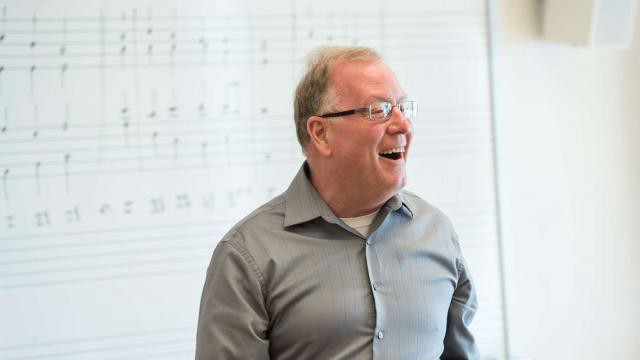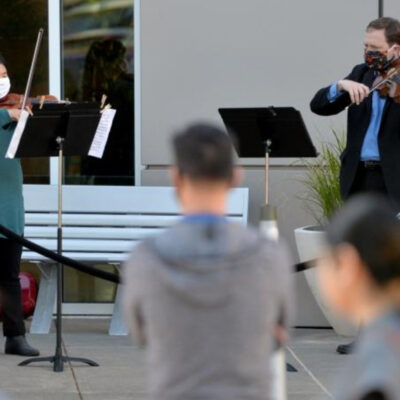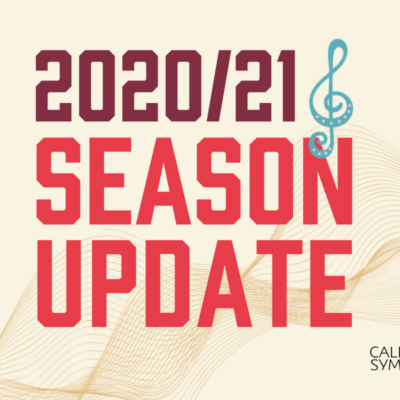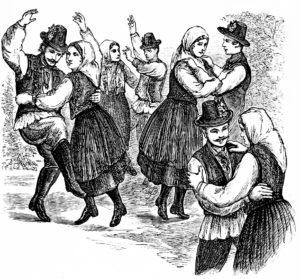
Within his Hungarian Dances, Johannes Brahms captured the rich and vibrant soul of Hungary’s beloved tradition of dance.
Perhaps one of his most well-recognized works, Brahms’ Hungarian Dances is a set of 21 dances inspired by Hungarian folk music, a diverse genre home to the colorful blend of the aural histories of Hungarians and Hungarian-minorities living in Poland, Czech Republic, Slovakia, Slovenia, Moravia, Croatia, and other neighboring nations. Originally written for piano, the Hungarian Dances were later arranged (by Brahms and other composers) for full orchestra. We think you might recognize this one…
Hungarian Dance No. 5 performed by Hungarian Symphony Orchestra Budapest
The Sound That Swept a Continent

Or should we say…four paw piano?
Brahms is not alone in his musical tribute to Hungary. Many composers were inspired by these sounds in a 19th century musical movement sparked by Franz Liszt’s 19 Hungarian Rhapsodies. The catalyst for Brahms’ own contribution to this subset of classical music was two-fold: during the mid to late 19th century, piano works for four-hands (requiring two players to sit side-by-side as their hands flashed and dashed across the keys) were reaching peak popularity, and compositions highlighting the sounds of these newly emigrated minority cultures were in high-demand in taverns across Europe.
An Unexpected Friendship
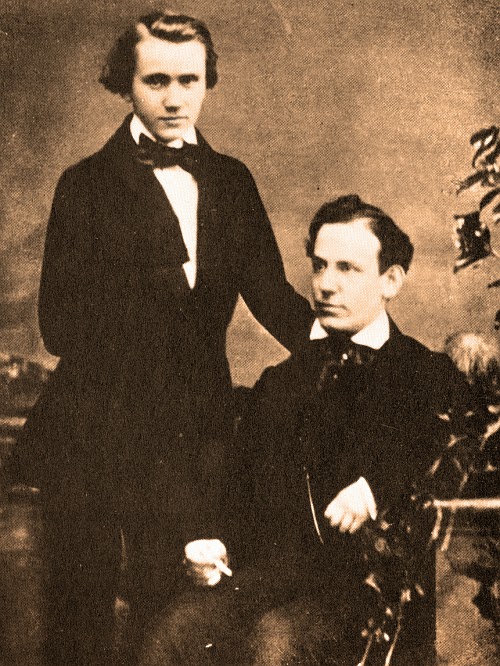
Johannes Brahms (left) and Ede Reményi (right).
Brahms’ greatest inspiration to compose his Hungarian Dances actually came years earlier in the form of a chance meeting with Hungarian violinist Ede Reményi. (Fun Fact: Reményi shared a teacher with violinist Joseph Joachim for whom Brahms would later compose his Double Concerto for Violin and Cello.) A few years after seeing Reményi perform for the first time, a then 20 year old Brahms became his accompanying pianist, joining Reményi on tour all the while learning about his native musical heritage.
Supported by his authentic experience of Hungarian folk music, Brahms eventually set pen to paper (or better, quill to manuscript) and tried his hand at composing in this style. Of the 21 dances, only Nos. 11, 14, and 16 are said to be entirely original compositions of Brahms’ working, but the result remains among his most popular and oft-performed works. Within his Hungarian Dances, Brahms captured the lilting and jubilant energy of the csárdás and verbunkos, traditional Hungarian folk dances characterized by dramatically varying tempos, lively rhythms, and whirling virtuosic passages.
The term csárdás actually encompasses a larger variety of Hungarian folk dance, each found in different ethnic areas with slight regional variations in name, structure, and performance. Dancers are male and female, with the latter donning traditional wide skirts which flair into a distinctive shape as they whirl (can be seen at 3:18 in the video above).
The older of the two dances, the verbunkos has roots in 18th century Hungary’s military tradition. The term verbunk is derived from the German verb “werben” meaning “to recruit.” In the hopes of enticing a town’s young men to enlist, a military unit would host a grand party with food, drink, and – you guessed it – dancing. Officers, led by their sergeant, would take turns in a great display of stomps, high kicks, spur-clicks and heel slaps (skip to 1:22 in the video above). Prospective recruits would gather in increasing numbers and, with the energy of the verbunkos reaching a fever pitch, were often pulled into the dance and effectively enlisted by the errant shake of a hand.
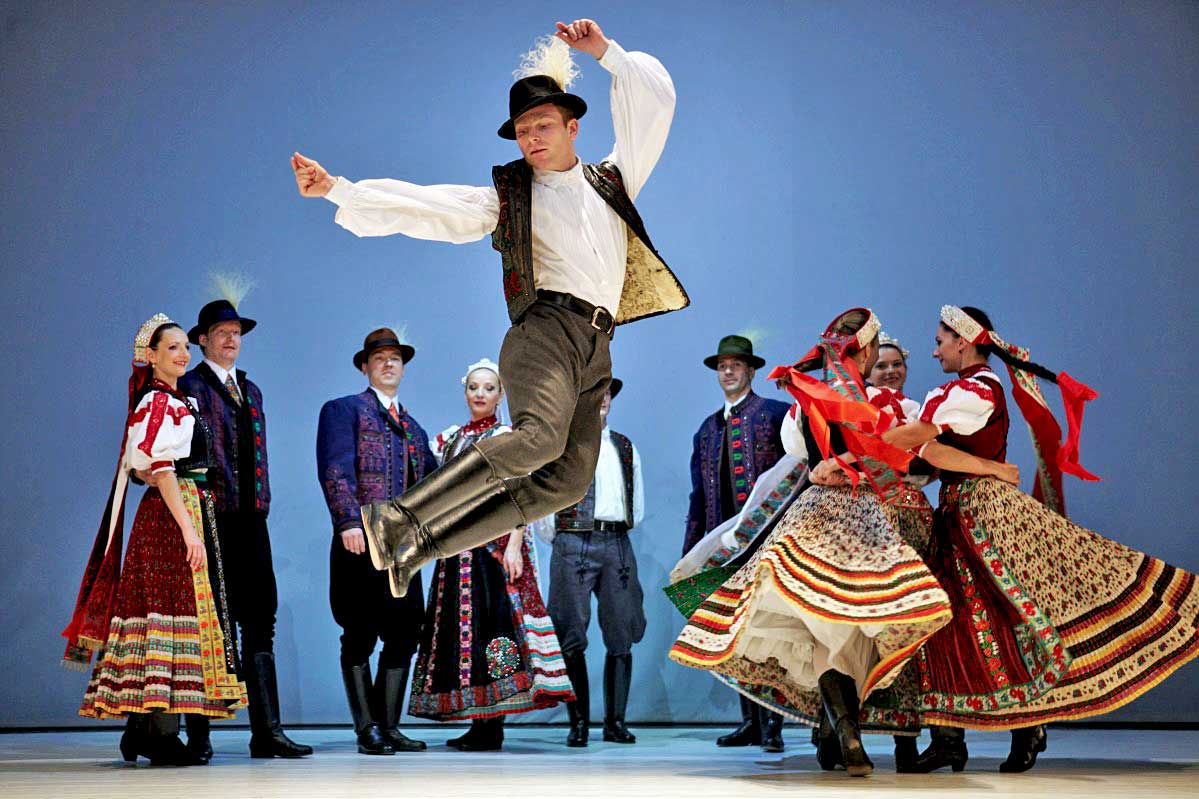 Nearly 150 years later, Brahms’ music is still just as vibrant as the days of its first performances in taverns and salons across Europe. In its black and white notation is an homage to the sounds of Hungary’s diverse history and people, rousing and exciting all who hear its lively swinging melodies. Just be careful whose hand you shake…
Nearly 150 years later, Brahms’ music is still just as vibrant as the days of its first performances in taverns and salons across Europe. In its black and white notation is an homage to the sounds of Hungary’s diverse history and people, rousing and exciting all who hear its lively swinging melodies. Just be careful whose hand you shake…
Check out Some Memorable Hungarian Dances with Charlie Chaplin, Looney Tunes, and two naked Frenchmen and a towel.
Hungarian Dances Nos. 5 and 6 will be featured on BRAHMS FEST on Saturday, February 1 at 8 PM and Sunday, February 2 at 4 PM at the Lesher Center for the Arts in Walnut Creek. Tickets start at $44 / $20 for students 25 and under with valid Student I.D. and can be purchased online or by calling the Lesher Center Box Office at 925.943.7469.

